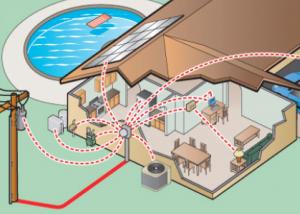California learns painful lessons from its proposal to mandate demand response.
Michael T. Burr is Fortnightly’s editor-in-chief. Email him at burr@pur.com.
When the California Energy Commission (CEC) proposed to include programmable communicating thermostats in the state’s new building codes, it expected some push-back from home builders. It didn’t expect what it got: a major public outcry.

An ABC News affiliate quoted Mark Toney of the Utility Reform Network saying it was a “Big Brother thermostat program.” Blogger Don Boudreaux called it a “huge leap down the road to serfdom.” The American Thinker called it an “invasion of the sanctity of our homes by state power.”
To find out what went wrong and what the CEC plans to do next, Public Utilities Fortnightly spoke with Jackalyne Pfannenstiel, CEC chairman, and co-author of a January 2008 Fortnightly article that examined the potential of a mandatory demand response program in California.
Fortnightly: What caused the public backlash against CEC’s proposed building code amendments?
Pfannenstiel: A couple things. Fundamentally, we had not thought through clearly enough how some people would perceive what we were proposing. They were concerned that we would be mandating, through the building standards, a device that had the potential of affecting people in their homes without them being aware of it.

